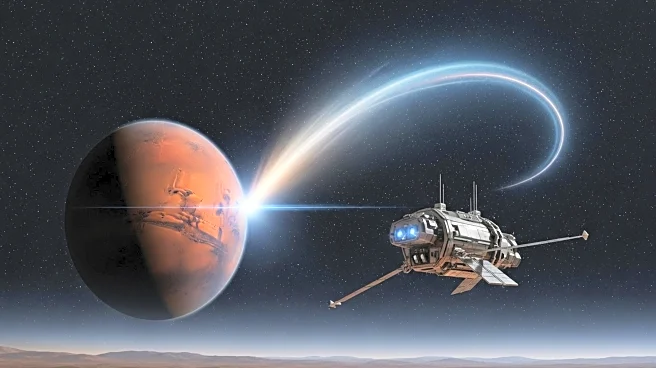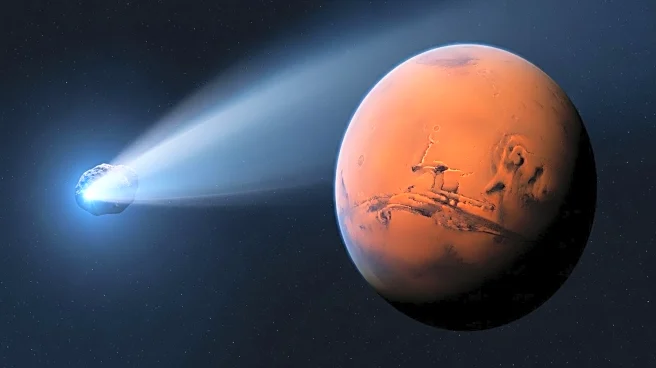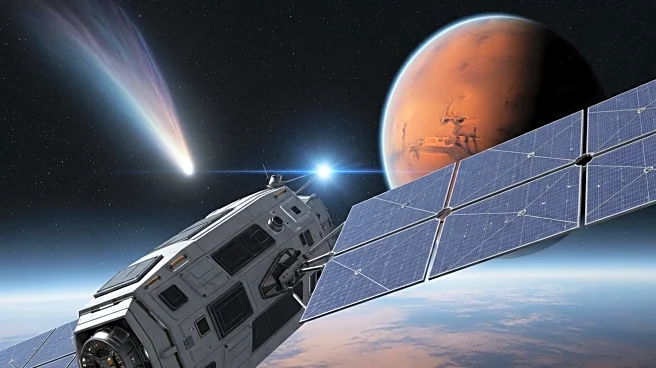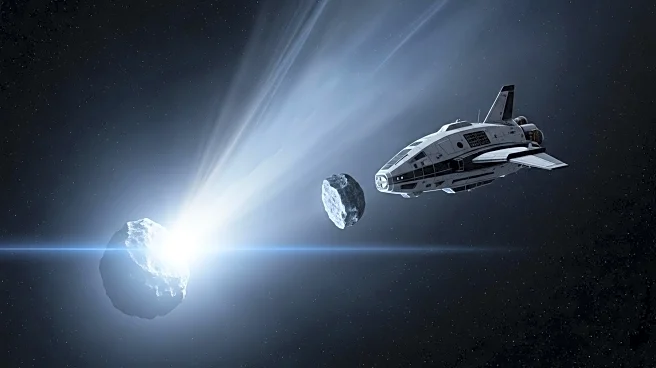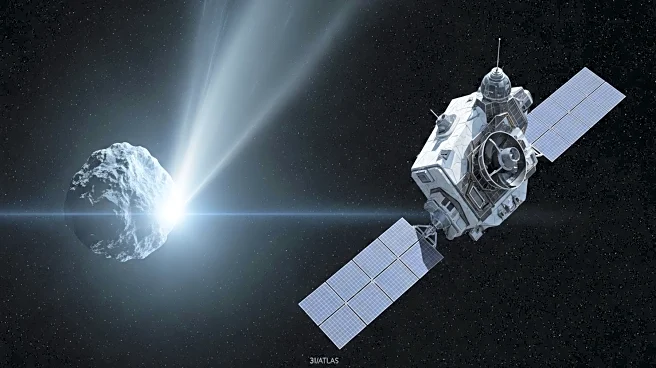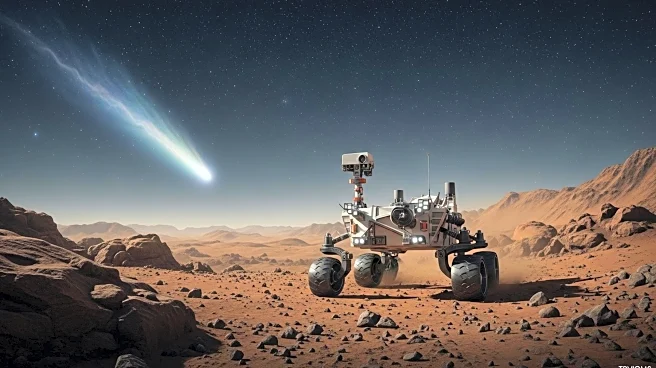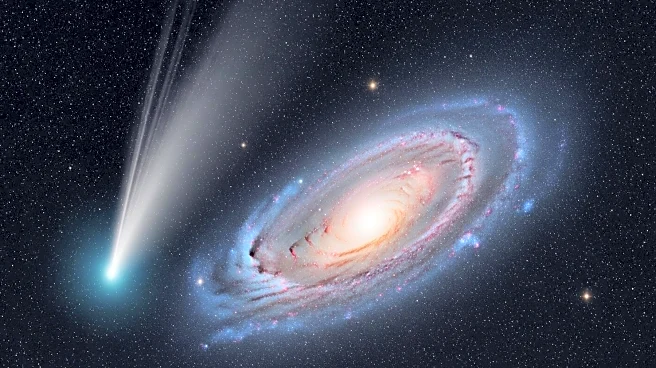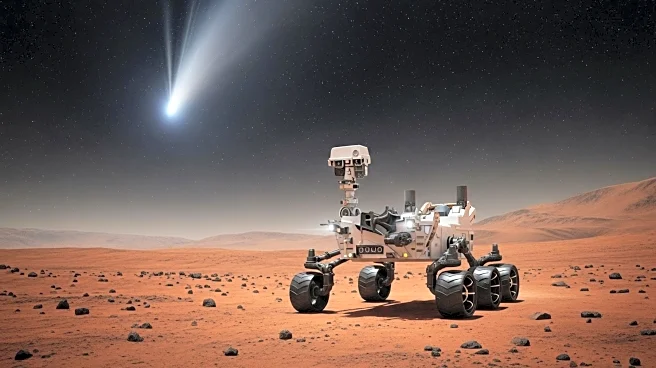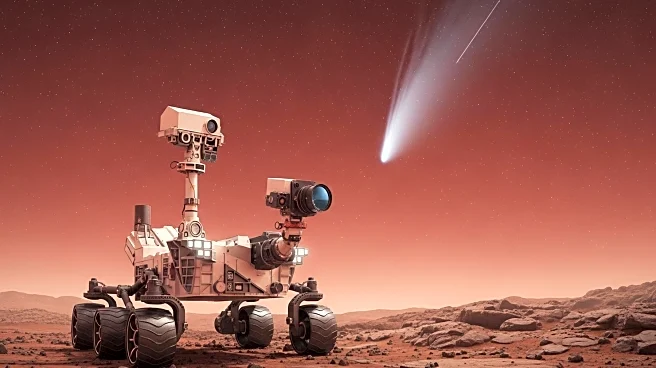What's Happening?
The European Space Agency (ESA) has announced that two of its spacecraft orbiting Mars have successfully captured images of the interstellar object 3I/ATLAS. This object, believed to be a comet, was photographed as it passed over 18 million miles away from Mars. The images were taken on October 3 using the ExoMars Trace Gas Orbiter (TGO) and the Mars Express spacecraft. The TGO's Color and Stereo Surface Imaging System (CaSSIS) managed to capture the comet's coma, a glowing halo of gas and dust, which is several thousand miles across. This observation was particularly challenging due to the comet's faintness, being 10,000 to 100,000 times fainter than typical targets. The Mars Express also attempted to capture images, but further analysis is required to reveal the results. The ESA's efforts come amid speculation that NASA's Perseverance rover might have also observed the comet, although this claim is disputed by some experts.
Why It's Important?
The successful imaging of 3I/ATLAS by the ESA's Mars spacecraft is significant as it provides valuable data on interstellar objects, which are rare visitors to our solar system. This comet is only the third known interstellar object to enter our solar system, offering a unique opportunity to study its composition and origin. The data gathered could enhance our understanding of foreign star systems, as 3I/ATLAS is believed to have originated from near the center of the Milky Way. Its chemistry, notably its high carbon dioxide to water ratio, differs from comets within our solar system, providing insights into the diversity of cosmic bodies. The findings could have implications for astronomy and our understanding of the universe's formation and evolution.
What's Next?
The ESA plans to continue observing 3I/ATLAS using its Jupiter Icy Moons Explorer (Juice) to capture more images as the comet becomes more active after its closest approach to the Sun. This ongoing observation will help scientists gather more data to analyze the comet's properties and behavior. The analysis of the images and data collected will take years, but it promises to yield significant insights into the nature of interstellar objects and their interactions with our solar system.
Beyond the Headlines
The discovery and study of 3I/ATLAS highlight the potential for interstellar objects to provide clues about the early universe and the processes that govern star systems. The comet's ancient origin, estimated to be over seven billion years old, suggests it has traveled vast distances, possibly offering a glimpse into the conditions of the early Milky Way. The study of such objects could also inform future space exploration missions and the search for extraterrestrial life by revealing the chemical and physical characteristics of materials from beyond our solar system.

